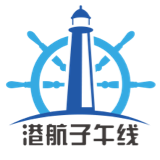IMO 2020: Bunker Claims Handling Guide for a new decade
IMO 2020: Bunker Claims Handling Guide for a new decade
Compliance: time charterparties
Primary responsibility for compliance with IMO 2020 rests with ship owners. This is normally reflected in charterparty provisions either as express ship owners’ warranties or as part of the vessel’s legal fitness obligations, although the risk and cost of compliance with IMO 2020 can be allocated under the charterparty terms. This applies in particular to time charterparties.
The majority of time charterparties pre-dating 2020, however, have not been drafted with the new and evolving compliance regime in mind. If unamended, it is likely that the charterparty will not adequately provide for compliance with the Sulphur Cap, Carriage Ban and the transition from HSHFO to VLSFO (if no Scrubber has been installed). This creates commercial uncertainty and could lead to disputes. Potential areas of dispute under unamended charterparties have been previously been discussed here. In particular, options for disposing of HSHFO in light of the Carriage Ban could be limited, and both parties are likely to be reluctant to assume this responsibility where it is not expressly set out in the charterparty .
With a view to achieving compliance with IMO 2020, Industry bodies such as BIMCO1 and INTERTANKO2 have introduced standard industry clauses for time
Compliance: voyage charterparties/COAs
Ship owners are responsible for the supply of fuel under these contracts which is built into the freight rate that is charged to charterers. Ship owners may seek to introduce bunker escalation clauses (e.g. the BIMCO Bunker Price Adjustment clause) or Bunker Adjustment Factor (BAF) clauses to protect themselves against fuel price volatilities.
In long term COAs agreed prior to 2020, problems may also arise where freight is adjusted by applying a historical adjustment mechanism/index which is not relevant to Compliant Fuel. This raises issues of construction under the contract, to which there is no easy answer and will depend on the particular wording of the clause and the facts of each case.
Enforcement: penalties and FONAR
MARPOL has a wide sphere of application. Enforcement of MARPOL rests with either a contracting Flag State of a vessel (the Administration) or a contracting Port State Control (“PSC”). MARPOL also imposes obligations on contracting states when it comes to enforcement and reporting on non-compliance, but specific enforcement measures and policing are left to individual contracting states.
In instances where Compliant Fuel is not available, a PSC can request evidence outlining the vessel’s attempts made to obtain Compliant Fuel, including attempts made to source local alternatives, under Regulation 18.2 of MARPOL. The IMO has introduced a Fuel Oil Non-Availability Report (“FONAR”) to cater for this scenario3 which is to be sent to both the Flag State and the port of destination. However, the FONAR is not to be treated as an exemption and/or waiver for compliance because a vessel issuing a FONAR will still be in de facto non-compliance with MARPOL, which could lead to disputes under time charterparties where, for example, ship owners claim indemnities against any losses suffered from charterers under the BIMCO or INTERTANKO clauses. Alternatively, where clauses are not incorporated, disputes are likely to arise as to whether a vessel is permitted to deviate from the contractual voyage to take on board compliant fuel (i.e. to avoid the risk of non-compliance) and what impact this could have on third party contracts of carriage and insurance coverage. Further, it must be remembered that, in the time charterparty context, most of the information and evidence required to complete a FONAR will be in the hands of time charterers, who may not provide this. See further information here.
There is no uniform approach regarding the nature and level of penalties to be imposed for non-compliance. Therefore much will depend on the approach of individual contracting states to IMO 2020 and national law already in place. Some states may be looking to impose high levels of fines to deter non-compliance, whereas others may be more relaxed. For example, Singapore has implemented a penalty system in which fines can go up to SG$ 10,000 and a non-compliant vessel’s Master could be imprisoned for up to 2 years.
Whereas states such as Russia and the Philippines have cast doubt over whether they will enforce IMO 2020 at all, at least in respect of their domestic fleets. A PSC is required to take into account all relevant circumstances when deciding what enforcement action to take against the vessel, which could include the PSC not taking any control measures (Regulation 18.2.3), although it is still unclear how this is likely to play out in practice. See the Club’s recent article: “Sulphur 2020 Compendium – How are individual port states expected to react?” (see here) for further examples of contracting states’ likely approach to this.
VLSFO: Sampling and testing
The IMO have released various guidance notes on the sampling and verification of fuel(IMO 2020: Bunker Claims Handling Guide for a new decade). The aim is to promote a consistent approach to verifying the sulphur limits of fuel. The Club has also published guidelines on the sampling of fuel (see here).
The Club has seen numerous cases where fuel has been delivered to a vessel with a BDN declaring it to have a sulphur content level of ≤ 0.50%, whereas testing at an independent laboratory of a sample of the fuel taken at delivery (in accordance with ISO standards) indicates that the fuel stem has a sulphur content of more than 0.50%, indicating non-compliant fuel. This has led to disputes under both time charterparties and bunker supply contracts.
It must be remembered that compliance with MARPOL and confirmation of the sulphur content is primarily based on the BDN which is to be accompanied by a representative sample of the fuel delivered. Whereas, commercial samples are not, in and of themselves, to be considered conclusive evidence of sulphur content, although they can be taken into account as part of a PSC inspection if they have been notified to the PSC as part of a vessel notification5. If a compliant BDN has therefore been provided by bunker suppliers, this suggests prima facie paper compliance.
Guidance has also been provided by BIMCO on this issue in which it suggested that as long as commercial test results give a sulphur content of 0.53% or less, then this might allow the ship to burn this fuel in good faith that the BDN value has been verified. However, BIMCO accept that there is still a risk that the fuel may subsequently be tested and found to be non-compliant by PSC, particularly the MARPOL delivered sample, so there is no guarantee of compliance on this basis either.
Ultimately, there appears to be no guidance as to whether fuel is to be consumed in such circumstances. Ship owners may choose to consume the fuel in question and seek to rely on any indemnity contained in the time charterparty6 should there be an inspection by PSC and it be determined that it is non-compliant fuel. However the reality is that, depending on the nature of the sample taken by PSC, this could still lead to disputes over whether the indemnity has in fact been triggered (i.e. where an in-use sample is taken which identifies excessive sulphur content, the question could arise as to whether this was due to the fuel stem itself or ship board issues for which ship owners are responsible (e.g. inadequate tank cleaning) unless PSC do, in fact, test the MARPOL delivered sample). The Club has issued an article on bunker tank cleaning and preparation to receive complaint fuel (see here).
Cautious ship owners may therefore be reluctant to take the risk of burning fuel in these circumstances and will want to verify, as best as they reasonably can, the actual sulphur content of the fuel. However, with the Carriage Ban now upon us, there will be no time for verification as the carriage of non-compliant fuel is prohibited, and ship owners will be forced to make a decision very early on, if not immediately
VLSFO: characteristics and concerns over use on board vessels
An inevitable by-product of IMO 2020 has been the shift in the type and nature of marine fuels required by the market to meet the regulations.
A wide variety of new fuels are currently entering onto the market, including numerous formulations of VLSFO possessing characteristics which vary significantly depending on the type of refinery process involved, blending components used and the petroleum crude source itself. Most will consist of various different blends of light distillate and heavier residual fuels, which are different to traditional fuels. Consequently, the use and supply of VLSFO could lead to fuel quality and specification disputes.
Disputes are likely to arise between fuel users, purchasers and suppliers under both time charterparties and bunker supply contracts. Various provisions exist to protect fuel users, such as statutory provisions on fuel oil quality, commercial fuel standards such as ISO 8217:2017 specifying the grade and nature of fuel to be supplied, and charterparty terms relating to quality and suitability of fuel . In the absence of express terms, charterers are under an implied absolute obligation at English law to supply fuel that is or reasonable quality and suitable for the vessel’s engines to burn.
However, these protective provisions – in particular ISO 8217:2017 – come with their own limitations:
• ISO 8217:2017 does not identify all possible contaminants. It does not cover all the qualitative requirements for fuel under Regulation 18.3 of MARPOL and routine testing does not identify all contaminants (which is what happened with the Houston off-spec bunker issues of 2018). So with the unpredictable nature of VLSFO blends, there is scope for contaminants to go undetected and lead to bunker claims.
• It is possible that the maximum limits for cat fines under ISO8217:2017 might be inadequate when evaluating new VLSFO blends which may contain a harmful level of catalytic fines.
• ISO 8217:2017 also does not address issues relating to stability and compatibility.
• Older ISO 8217 standards (i.e. 2005 and 2010) are still being used throughout the market, and these standards may not afford sufficient protection in terms of testing parameters and limits, especially for new fuel coming onto the market such as VLSFO.
• The scope of charterers’ implied obligation to provide suitable fuel may be limited and/or not apply in circumstances where a vessel’s main engine has unusual or specific requirements in terms of fuel to be supplied, and this was not brought to the attention of time charterers.
• Issues arising out of incompatibility between fuels are well known but are likely to become more complicated due to the various blends of VLSFO entering the market, and limited guidance exists on how to manage this risk. This is especially relevant for those bulk vessels in the tramp trade who have limited storage capacity and may have limited choice in terms of fuel due to extensive trading around the globe. Whereas there are safeguards to combat this, such as segregation of fuel stems into empty separate tanks and avoiding co-mingling of fuel where possible, an element of co-mingling will always be inevitable on board due to existing residues in the ship’s system or limited tank capacity. ISO 8217:2017 does not address compatibility concerns, and there is only limited guidance in the recently published ISO Publically Available Specification (PAS).
Physical fuel suppliers are also likely to be under increased scrutiny. For bunker supply contracts, the BIMCO Bunker Terms 2018 include a physical supplier’s default warranty that the fuel supplied complies with ISO 8217:2017 which represents a good starting point. However, fuel purchasers will need to consider their contracts carefully.
This applies, in particular, to time charterers who are recommended to ensure that they are as back to back as possible between the charterparty and bunker supply contract. This is not only limited to the specification and grade (including sulphur content) of fuel to be supplied, but includes compliance with all relevant MARPOL regulations and extends to fuel sampling at delivery (e.g. the method, location and witnessing), testing, notification of quality claims and dispute resolution. For example, particular care should be taken if a ship owner is seeking a compatibility warranty from a time charterer (i.e. under the INTERTANKO Bunker Compliance Clause), because a physical supplier is very unlikely to agree to such a warranty.
More generally, care needs to be taken to identify whether physical suppliers might seek to protect themselves by limiting the scope of ISO 8217:2017, either through deleting or amending clause 5, imposing shorter time limits for notification of bunker quality claims or seeking to cap their financial liability. The finances/cash flow of physical suppliers may also be adversely affected by the premium of VLSFO over HSHFO, which may itself result in reduced credit terms and shorter payment periods being inserted into bunker supply contracts. Physical suppliers may also be more keen to enforce payment provisions, for example by seeking to arrest (unpaid) bunkers in favourable jurisdictions.
Club Cover
Fines: As reflected above, there are many possible reasons why non-compliance with IMO 2020 may occur and may lead to fines and potential liabilities and claims for damages. Consequently, in the case of fines or other penalties levied by a Flag State or a PSC against the vessel, Club cover may be discretionary. There may be instances where Club cover could be available in respect of accidental escape or discharge of any substances. For a discharge to be accidental, there should be no intention to cause a discharge. Rather, the discharge itself should be an accident.
A case where discharge (or other breach of regulation) is done intentionally, even in the mistaken belief that it is permitted, would not be deemed accidental. Put simply, a casualty or equipment breakdown which results in discharge of incorrect fuel is likely to be deemed accidental (albeit such circumstances are likely to be rare), whereas a vessel mistakenly using or carrying fuel which is in breach of regulations is not.
Pollution: Claims of pollution are covered, subject to Club rules, if damage is proven for which the Member is liable. However, it is considered unlikely that non-compliance with IMO 2020 will result in incidents giving rise to pollution damage claims. If pollution damage occurs, claimants may find it difficult to establish a causal link between an incident involving an entered vessel (alone) and the damage to property, the environment or public (or personal) health.
Conclusion
What does all of this mean? In short, it means that bunker quality claims and/or related vessel main engine damage claims could become more frequent and complicated. There is a clear tension between the provision of stable and suitable fuel (an issue for time charterers/bunker suppliers) and the role of on-board fuel management (an issue for ship owners/ship operators). Detailed investigation of shipboard operation and vessel maintenance in the lead up to the reception of a fuel stem is all likely to be required.
When dealing with incidents and/or potential disputes arising out of IMO 2020, the following categories of documents should be collected in the first instance by/ from Members:
• Ship Implementation Plan (SIP), prepared in accordance IMO guidance.
• Oil Record Book (Part I) & Engine Logbook – all entries for internal fuel transfers, bunkering, retention, disposal should be entered properly and kept up to date.
• Tank plans and piping diagrams. Records to note the condition of tanks, pipelines and other associated records (like line flushing, tank cleaning, etc).
• Records noting that segregation of fuel system tanks and pipe work has been maintained, where necessary.
• Fuel supply document(s) (bunker quotation/ correspondence).
• Bunker samples.
• Bunker Delivery Note (BDN).
• Fuel Quality Test report (as per Appendix VI of
• Written procedures for fuel changeover and associated records.
• Training records for crew and shore side personnel.
• Fuel Oil Non-Availability Report (FONAR), if applicable.
• Notes of Protest
• Any notifications made to either PSC or Flag State.
IMO 2020 has created new technical challenges for ship owners and managers: increased training of crew and updating of onboard procedures will be required for fuel handling, and there is limited guidance on how to manage stability and compatibility risks with VLSFO. A failure to clean a vessel’s fuel system adequately could give rise to either non-compliance with MARPOL (e.g. PSC samples taken identify a sulphur content of more than 0.50%), or fuel contamination or instability causing vessel main engine damage. Whilst the industry standard clauses discussed above seek to allocate responsibility for this operation to ship owners, the actual cause of the damage may not be immediately apparent, and this could be a grey area.
RECOMMENDATION









